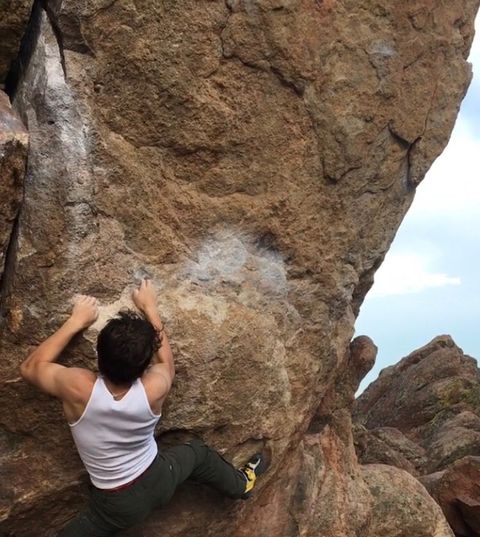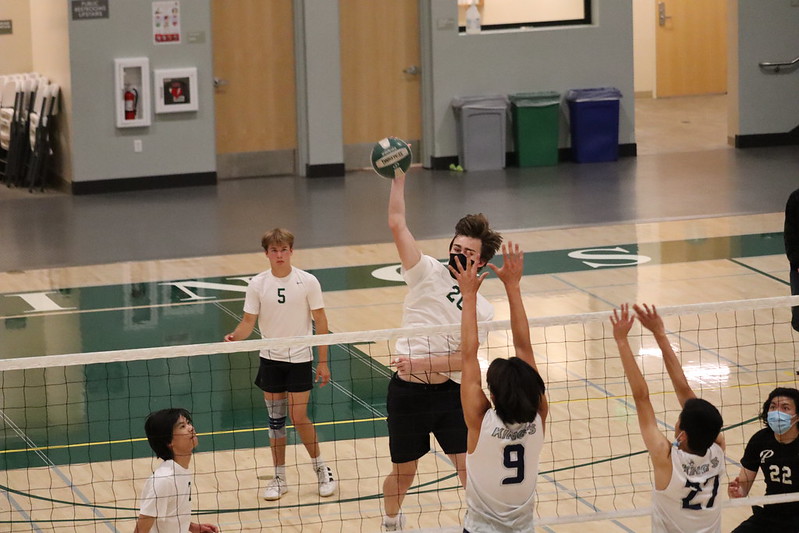New Olympic Sports

December 8, 2021
After a delay of almost a year due to COVID-19, the Tokyo Summer Olympics was a big excitement and distraction from the chaos surrounding the pandemic. We saw typical sports such as swimming, gymnastics, and track and field, but new sports, including surfing, rock climbing, and skateboarding were introduced to a global audience this year. These sports target a younger demographic and the majority of medalists were under the age of 30. Here at Paly, surfing, skateboarding, and rock climbing are growing increasingly popular among students.
Skateboarding
Although skateboarding has long been popular globally, skateboarding at Play has gained popularity over the last two years due to the pandemic. Skateboarding made its Olympic debut in the Tokyo 2021 Summer Olympics after the Olympic Committee finally recognized it as a sport.
Olympic skateboarding has two competitions, park and street. Participants in the park competition can use the course to perform whatever tricks they would like. The course resembles a large bowl, with steep sides and almost vertical drops, allowing skaters to perform spins and tricks throughout the course. Skaters are judged based on the quality and height of their tricks. Twenty skaters perform three 45-second runs with five judges scoring based on a zero to 100 point scale. The street competition takes place on a course that mimics a real street – with benches, stairs, rails, and walls. Speed, height, originality, and execution are all factors that will affect the overall score. Twenty skaters have two runs and five tricks which are scored by the judges on a zero to 10 scale. In both competitions, eight competitors will advance to the final rounds.
In Tokyo, Olympic skateboarding was dominated by teenagers, such as Great Britain’s 13-year-old Sky Brown, who won bronze, or Japan’s 12-year-old Kokona Hiraki.
Freshman Keshav Srinivasan, an avid skateboarder, on the media portrayal of skateboarding, and the misconceptions presented in Olympic coverage.
“In my opinion skateboarding being in the Olympics was a good thing, as it gave skateboarding some good positive publicity, and it portrayed skateboarding as just any other sport like basketball or soccer,” Srinivasan said.
Historically, skateboarding has not been widely covered in the mainstream media, and is most well known for its distinctly subversive “skate culture.” Skateboarding is filled with independence and influences on street fashion and music.
“I could see the judges messing up tons of trick names making me think they don’t really skate all that much or understand skate culture,” Srinivasan said.
Although Srinivasan believes that the Olympic coverage will give skateboarding positive representation and respect, he also acknowledges that putting it in the spotlight, it will change skate culture.
“I think that the Olympics will make skateboarding culture less core, and more beginner-friendly,” Srinivasan said.
Unlike many traditional sports, skateboarding doesn’t require a lot of money in order to be successful, as all you need is a skateboard to begin.
“In the end I like skateboarding being an Olympic sport, as it will give skateboarding more good publicity and more money,” Srinivasan said.
Surfing
Although surfing is new to the Olympics this year, it has an extensive history going back to pre-Inca Peru. Despite its ancient history, the sport only took off in popularity in Hawaii at the start of the 20th century. Since 1995, the International Surfing Association has petitioned for surfing to be in the Olympics, and this year it finally happened.
In the Olympics, there are six rounds of surfing with multiple heats. After the second round, surfers are eliminated, leaving only the top surfers in each heat to advance. As the rounds continue, the heats progressively get smaller. Surfers can catch up to 25 waves per heat, but they are only judged on their top two waves for maneuvers, speed, power, and flow.
Here at Paly, surfing is a relatively popular sport. Sophomore Eliza Gaither has been surfing for around five years and felt that seeing surfing in the Olympics allowed for better representation and recognition of the sport.
“I loved watching the Olympic surfers because it was amazing to see surfers being recognized and awarded for their amazing talent,” Gaither said.
Currently, amateur and professional surfing has a primarily male demographic and is only popular on the coasts, and Gaither believes that the positive media representation will increase popularity amongst people who have never surfed.
“I think that since the sport was so widely streamed this summer, it will become more popular and [more] people will begin surfing,” Gaither said.” As a new Olympic sport, I think surfing will no longer be a sport that only a specific group of people participate in.”
Globally and locally, surfing is on an upward climb and it will be crucial to see where the sport goes in the next few years as it receives more mainstream media attention.
Rock climbing
While rock climbing has long been an adventurous and popular sport, it was just included in the Olympics this year. A total of 40 climbing participants, 20 women, and 20 men competed in this combined event. This event included three climbing formats: speed climbing, bouldering, and lead climbing. Speed climbing involves two people climbing a relatively easy fixed-route extremely quickly, whereas bouldering is a climbing race done without safety ropes where an athlete climbs as many routes as they can in four minutes. Lastly, lead climbers compete to ascend as high as possible on a 15-meter wall. Even though this sport is a new addition to the Olympics, it has been growing its popularity rapidly in recent years.
Here at Palo Alto High School, there are many young athletes interested in the sport. Reed Shulman, a Junior, shared his thoughts on his sport being finally included in the Summer Olympics.
“I was quite pleased to see my sport receive exposure in the Olympics,” Shulman said. “Hopefully, this will have a positive result on the industry as climbing continues to grow extremely rapidly.”
All athletes competing in this Olympic sport participated in all three different forms of climbing. To prevent the athletes from observing other Olympic participants scaling the walls before them, each climber was kept away from the climbing wall before their turn. This format was quite controversial as the three disciplines are wildly different and few are elite in all three.
“The Olympic format for climbing was questionable due to the nature in which all disciplines were combined,” Shulman said.
Sport climbing was primarily dominated by young adults around the age of early twenties. Spain’s Alberto Gines Lopez took the first-ever Olympic gold medal in climbing.
“Although my favorite climbers were not in the Olympics, it was cool to see the best of the best receive the world’s attention,” Shulman said.
Due to the Olympics, the sport and the athletes participating in it have been able to get the recognition they deserve. It will be fascinating to see where this sport goes in the future.










